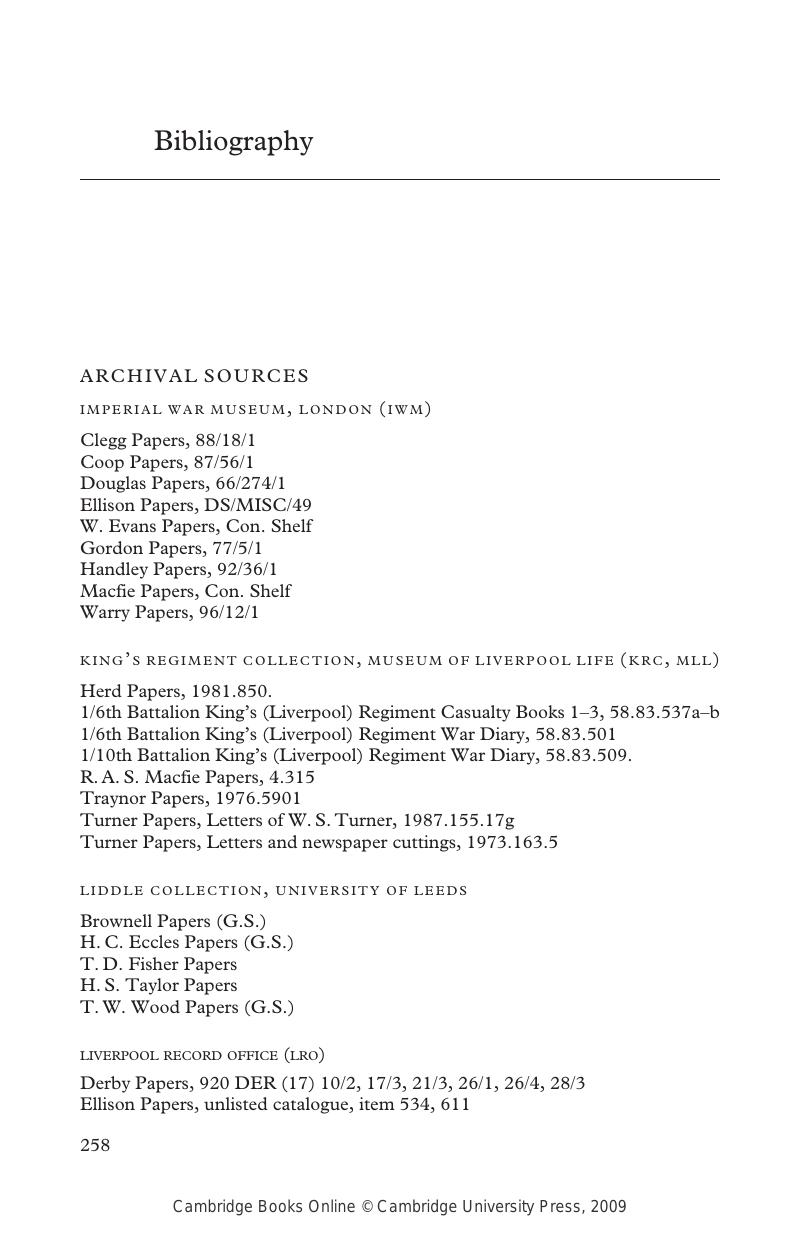Book contents
- Frontmatter
- Contents
- List of figures
- List of maps
- List of tables
- Acknowledgements
- List of abbreviations
- 1 Introduction
- 2 Pre-war Liverpool and the Territorial Force
- Part I Territorial characteristics and the morale of the soldier
- Part II Command, discipline and the citizen soldier
- Part III Attitudes and experience: the war and its aftermath
- Bibliography
- Index
- Studies in the Social and Cultural History of Modern Warfare
- References
Bibliography
Published online by Cambridge University Press: 25 July 2009
- Frontmatter
- Contents
- List of figures
- List of maps
- List of tables
- Acknowledgements
- List of abbreviations
- 1 Introduction
- 2 Pre-war Liverpool and the Territorial Force
- Part I Territorial characteristics and the morale of the soldier
- Part II Command, discipline and the citizen soldier
- Part III Attitudes and experience: the war and its aftermath
- Bibliography
- Index
- Studies in the Social and Cultural History of Modern Warfare
- References
Summary

- Type
- Chapter
- Information
- Citizen SoldiersThe Liverpool Territorials in the First World War, pp. 258 - 269Publisher: Cambridge University PressPrint publication year: 2005



